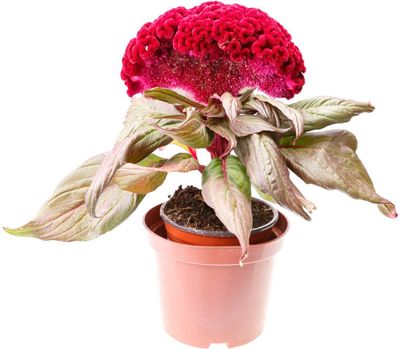Due to their preference for full sun and drier soils, celosia is excellent for use in containers and xeriscaping. When grown in the right conditions, celosia can be a long-blooming, low maintenance plant, but it can also be susceptible to certain pests and diseases. If you’ve found yourself wondering: “why is my celosia dying,” continue reading to learn about common celosia problems.
Celosia Plant Death from Pests
One of the most common causes for celosia plant death is an infestation of mites. Mites are related to spiders, they have eight legs and may be detected by the fine, tiny web-like strings they produce. However, mites are so small that they often go unnoticed until they have created much damage to the plant. These tiny creatures hide on the underside of leaves and in cracks and crevices of plants. They quickly reproduce so that several generations of mites may be sucking your plant foliage dry. If plant foliage begins to turn brown-bronze and become dry and brittle, closely inspect the plant for mites. To treat mites, spray all surfaces of the plant with neem oil or insecticidal soap. Ladybugs are also beneficial allies in controlling mites.
Celosia Plants Dying from Fungus
Two fungal diseases that celosia plants are susceptible to are leaf spot and stem rot. Leaf spot – Symptoms of leaf spot are brownish tan spots on the foliage. Eventually, the tissue spots may become holes. If fungal leaf spot is left to spread too much, it can kill the plant by destroying enough plant tissue that the plant cannot properly photosynthesize. Leaf spot can be treated with copper fungicide if caught early enough. Increasing air circulation, sunlight, and watering the plant at the soil level can help prevent leaf spot. When spraying any products on plants, you should do it on a cool, cloudy day. Stem rot – This is a soil borne fungal disease. It can lay dormant in soil for a long time until the right conditions cause it to infect any nearby plant. Cool, wet weather followed by extremely hot and humid conditions often trigger the growth and spread of stem rot. Stem rot symptoms appear as gray-black, water-soaked spots on the stems and lower foliage of plants. Eventually, the disease will rot right through the plant stem, causing the plant to die. While there is no cure for stem rot, it can be prevented by creating better air circulation, increasing sunlight, and watering celosia plants gently at soil level to prevent major splash back. Overwatering can also lead to stem and crown rot. Always water plants deeply but infrequently.
